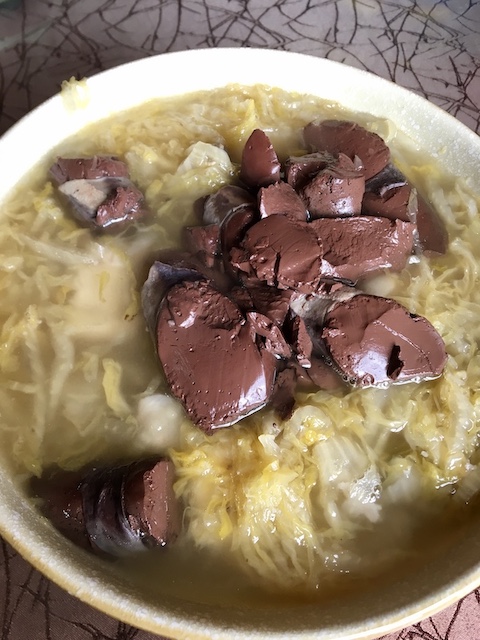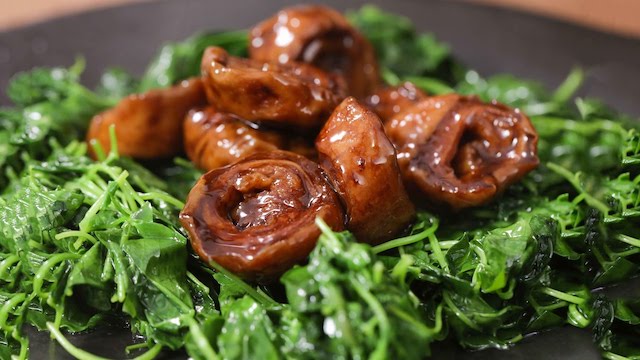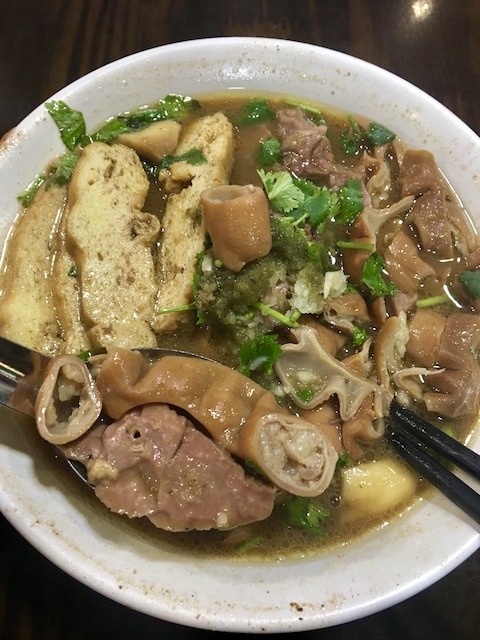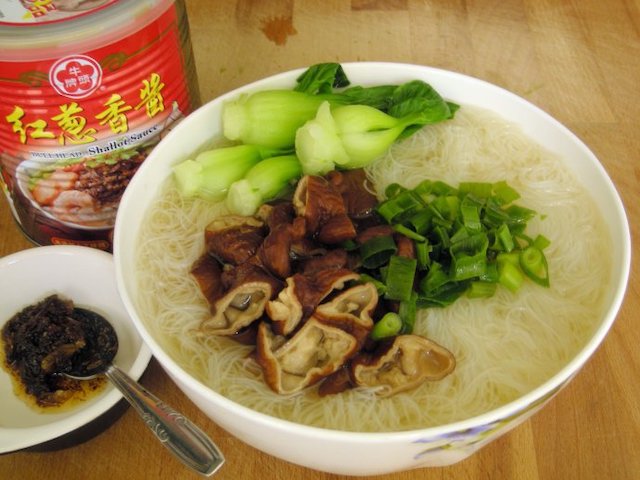Flavor is more than skin deep: The many ways in which Chinese eat offal

China and the United States are among the world’s biggest meat consumers, but there’s a big difference in what each country is willing to eat. American meat consumption is limited to skeletal muscle and mostly excludes offal, or the organs (heart, liver, intestines, etc.) and extremities (brain, tongue, feet, etc.). In contrast, Chinese carnivores seem to be enthusiastic about making nose-to-tail use of their livestock. It’s common to find cubes of congealed blood in hotpot, steamed chicken feet in dim sum, or sliced liver in congee. I think back to when my mom would pick me up from elementary school with a tin of freshly braised duck tongues from Chinatown. I remember thinking how unfortunate it was that my peers considered duck tongue, so fatty and tender, to be inedible.
Outside of the U.S., offal is prepared in a multitude of ways. Notable to Americans may be foie gras in France and liverwurst in Germany. Across Latin America, beef tongue is cooked differently from country to country. Throughout Southeastern Europe and the Middle East, the brain, stomach, and hooves of a sheep or cow are used to make various forms of stew. In Filipino cuisine, pig snout, ear, liver, and belly are fried with chili peppers to make sisig.
Offal is also nutritious. Most organ meats are high in protein, iron, and vitamin A, but as all things delicious, certain parts are considerably high in fat and cholesterol. It seems like Americans may be missing out on a culinary treasure. But never mind that for now — let’s return the focus back to China. Here are five preparations of the fattiest type of offal — large pork intestine — spanning across various culinary regions.
Northeastern blood sausage (血肠 xuěcháng)

If you’re familiar with German blutwurst, Chinese blood sausage should be pretty straightforward. Native to northeast China, this dish consists of boiled intestines filled with one part pork blood and one part soup stock. The sausage is cut into one-inch chunks and stewed with Chinese pickled cabbage. In typical northeastern fashion, everything is consumed hot so as to keep warm during the frigid winters.
Shanghainese braised intestines (草头圈子 cǎotóu quānzi)

Literally translated as “clover rings,” this dish is made by braising intestines with soy sauce, ginger, scallions, and sugar, while the clovers are cooked in wine. Chinese clover is slightly bitter, so the fattiness of the intestines gives it a little more depth. Shanghainese cuisine is known for being sweet relative to other regions in China, and this dish is no exception.
Beijing stewed lung and intestines (卤煮火烧 lǔzhǔ hǔoshao)

In stark contrast to Shanghainese cuisine, Beijing cuisine is known for being salty. This dish, roughly translated as “stewed bread,” is a salty medley of large intestine, small intestine, lung, fermented tofu, baked wheat cake, soy sauce, vinegar, leek, sesame paste, and a variety of Chinese medicinal herbs. It’s topped with a generous amount of minced garlic and cilantro, only adding to the intense fragrance. The small intestine, while harder to prepare, is sweeter than the large intestine and gives this dish a special kind of funkiness.
Chongqing spicy fried intestines (重庆辣子肥肠 chóngqìng làzi féicháng)
This dish, simply named “spicy large intestine,” is native to Chongqing, a region recognized for harrowingly spicy cuisine. The intestines are first boiled with ginger, then dry-fried with a generous amount of numbing Sichuan peppers and chili peppers. It also includes star anise, bay leaf, cardamom, and garlic, giving the dish a particular earthiness. The peppers offset some of the funkiness of the intestines but will leave your mouth feeling numb.
Taiwanese intestine rice noodle soup (台湾肥肠米线 táiwān féicháng mǐxiàn)

Across the Taiwan Strait, intestines can be prepared in a simple rice noodle soup. The intestines are first boiled and then added to fish broth, rice noodles, various greens, scallions, and fish sauce. Fish broth is lighter in flavor compared to pork or chicken broth, so it pairs well with the fattiness of the intestines.






